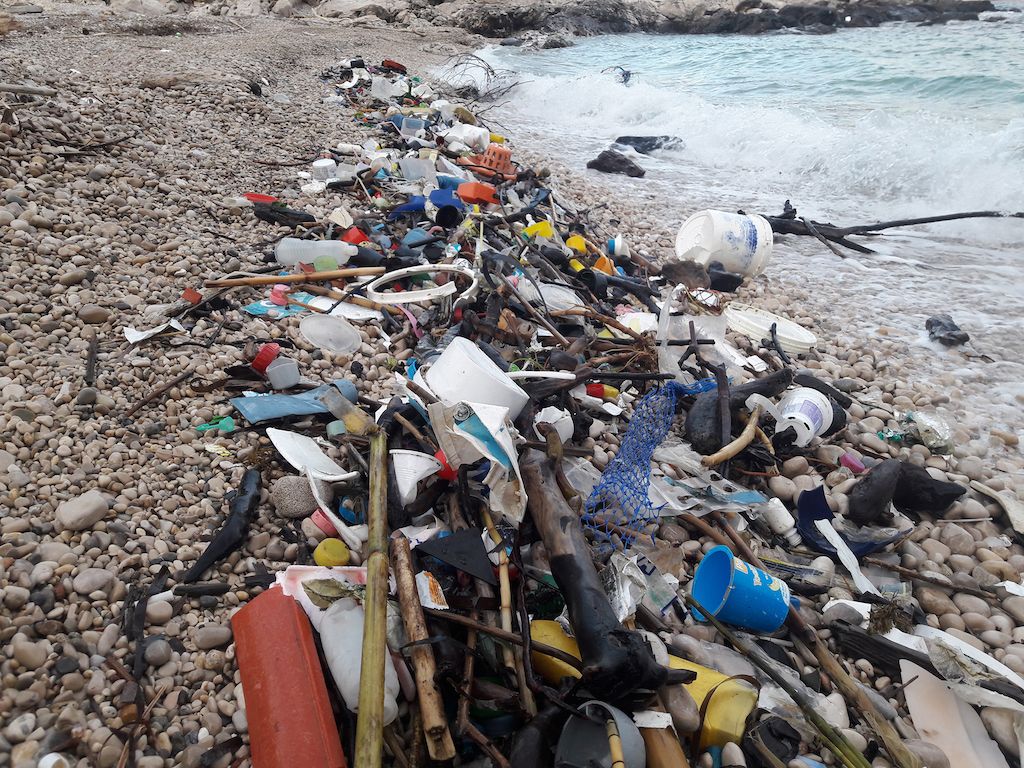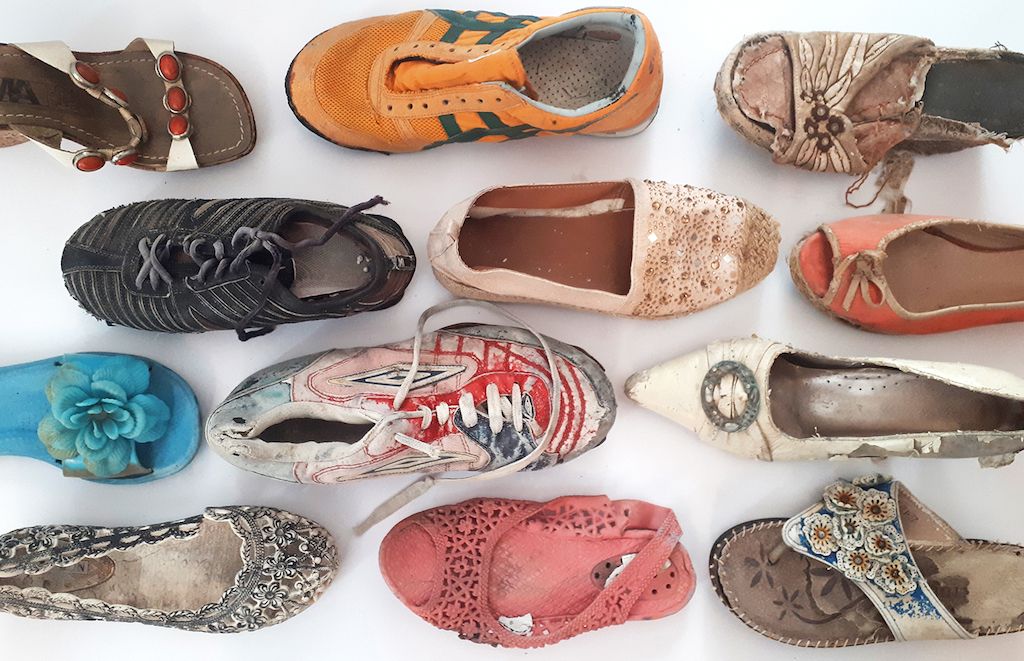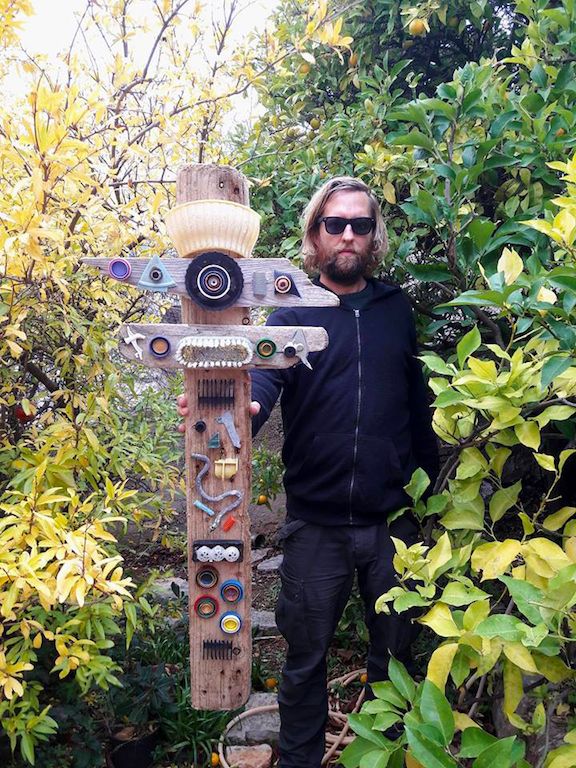A press release from PlatFORma Hvar on April 27, 2018.
We would hereby like to inform you and invite you to the exhibition which will be held on May 4 and 5 at the Arsenal terrace in Hvar town.
The exhibition will consist of an installation of 500 shoes that the artist collected during the winter of 2017/2018 on the beaches of Hvar: Pokonji Dol, Milna, Bonj, Velo Borče, Malo Borče, Milna, Veli Dolac, Zorače, Dubovica, Zavala, Gromin Dolac and Sućuraj.
This impressive collection of discarded footwear is by itself a powerful and moving visual statement. Besides that, it’s the artist’s commentary on our current relationship with waste and a warning about the enormous ecological consequences of the dumping of waste in the Adriatic Sea. If in a couple of months, five hundred shoes can be collected on a few Hvar beaches, how many shoes are in the Adriatic in total?
What does this say about the total amount of trash dumped in the Adriatic?
Mark Boellaard is a Dutch artist who has been living on Hvar since 2012.
Although he is primarily known for his collage and photomontage work, living on the island, he found a way to transform the trash he found on the beaches into something else – into art. Last year he made a series of works which he named Assemblage – assemblages de la plage – assemblages from the beach. For this series Boellaard’s idea was to recycle and return value to the trash he found on the beach.
While walking around on the beaches of Hvar, he also got the idea for his next exhibition: “500 Pepeljuga” (500 Cinderellas).

The PlatFORma association recognized the importance of this project in times where the issue of waste management is being addressed on a national and a local level.
The first step in finding a solution is making sure that as many people as possible be made aware of the problems dumping waste in the Adriatic Sea causes.
That is exactly the goal of this exhibition.
Every one of us needs to drastically reduce the amount of waste we produce on a daily basis. Every small change on a personal level counts! We all have a responsibility towards nature and future generations.
The opening of the exhibition will be May 4 at 19:00 on the terrace of the Arsenal building in Hvar and will be open only the next day May 5 from 10:00 till 21:00.
A message from the artist:
Many things are floating in the Adriatic Sea today. The unfortunate sardine, lobster, octopus and all their friends have to swim side by side with an endless amount of plastic bottles, bottle caps, jerrycans, lighters, pieces of styrofoam, syringes, plastic bags, food wrappings, test tubes, various building materials, discarded pharmaceutical products and so on.
In short: “Civilization”.
In the wintertime, a considerable amount of this trash ends up on the beautiful beaches of Hvar. Amongst the debris, we can also usually find, interestingly enough, some pieces of footwear: sneakers, slippers, flip flops, sandals, evening shoes and boots in all shapes, sizes and colors.

When you see a single shoe laying on the beach, you might be tempted to think, “maybe this shoe was lost accidentally by a lovely Dalmatian lady hurrying home, like a modern-day Cinderella, after dancing the night away on a yacht?”
But as you find more and more shoes on every beach, you slowly conclude that these shoes are ending up in the Adriatic in massive numbers, and most likely by a combination of deliberate dumping of garbage and almost criminal mismanagement of garbage disposal in all countries surrounding the Adriatic Sea and beyond.
These shoes were collected in the winter of 2017/2018 on the following beaches of the island of Hvar: Pokonji Dol, Milna, Bonj, Velo Borce, Malo Borce, Milna, Veli Dolac, Zorace, Dubovica, Zavala, Gromin Dolac and Sucuraj.
If in a couple of months five hundred shoes can be collected on a few Hvar beaches, how many shoes are in the Adriatic in total?
What does this say about the total amount of trash dumped in the Adriatic?
We are witnesses to an ecological catastrophe of the highest order. Annually, a colossal fourteen billion tons of trash ends up in the seas. Much of this waste is plastic.
We are poisoning the sea water and are risking killing all marine life. Alarming amounts of microplastic are being measured in sea water, our drinking water, sea animals, in human beings and even in the air that we breathe. The amount of trash being produced on a daily basis needs to be drastically reduced.
Every small change on a personal level counts!
Developing an efficient system of waste management along with the fight against illegal waste dumping should be the highest priority for all governments of the countries surrounding the Adriatic Sea.
The Adriatic Sea is not meant to be used as a garbage can
We all have a responsibility towards nature and future generations.

Let’s fix this!










